GMS Field Trip
If you have any questions about field trips send email to
Gold (and best sand)!
GMS Field Trip
Tours and Gold Panning in Georgia
Saturday, July 23, 2016
The GMS field trip to Dahlonega had 4 locations divided into morning and afternoon activities. We started at the Chestatee Diving Bell pavilion. Local historian and president of the Lumpkin County HIstorical Society, Chris Worick, gave us a presentation about the diving bell. He and others were instrumental in preserving this unusual and rare artifact. He explained the history of the diving bell up to its current status and explained how it was used. It is a fascinating artifact and we thoroughly enjoyed his talk.
From the diving bell it was a short walk to the Dahlonega Gold Museum where we received a group rate and a personalized tour! The museum is packed with the history of gold mining in Dahlonega as well as the Dahlonega mint. We also learned about the Cherokee people and the sad history of the "Trail of Tears". GMS member Richard Harris volunteers at the museum so we got an extra special tour!
Then a few minutes and a short drive later we were at the Crisson Gold Mine where we received another group rate! They also ran the stamp mill just for us! The stamp mill crushes rocks so the gold can be extracted. It is loud and exciting and a rare glimpse of historical gold mining in action. Then, we lined up alongside a water filled trough and watched intently as a Crisson employee demonstrated panning. Once we got the idea, she gave us our own pans of sand and we went to work! Everyone got a few flakes of gold in a little glass vial. Then we did a little "gem grubbing" and filled baggies with colorful stones like aventurine, citrine, amethyst, rose quartz, quartz crystals, corundum crystals, amazonite, and Kento may even have found some common opal!
After a break for lunch, we reconvened for a trip to an old gold mine. Each junior received a little bag of chocolate gold coins. Then, Chris Worick gave us a brief history of the mine. After we arrived at the mine, we walked up the creek to see a water wheel. Chris talked about hydro-mining and we speculated how the wheel may have been used. Though its purpose is unknown, it is an impressive artifact and juniors got to turn it. GMS member Bob Brady set up his "gold cube" and ran sand through it to extract a concentrate of heavy sand and gold! All practiced up on our panning techniques, the rest of us jumped into the creek and worked away. I heard of at least 4 people who found small bits of gold in the creek including a junior! One member and his daughter were the most successful. They panned at least a dozen flakes -- definitely encouraging to the rest of us. At the end of the day, Bob Brady emptied the cold cube concentrate into an old peanut butter jar (thanks to Shelley Stubbs and her peanut butter loving son!) The concentrate has tiny gold "flour". Bob donated it to the GMS sand collection :o)
There are so many people to thank for making this a fun and successful trip. Chris Worick shared his expertise to tell us all about the Chestatee Diving Bell as well as the old gold mine we visited. Richard Harris made our museum trip extra special and we sincerely appreciate his assistance. Three different property owners graciously allowed us access to the old gold mine to pan in the creek. Bob Brady worked hard with his gold cube to extract concentrate for the club. And all of the field trip attendees were very helpful and friendly with one another! Thank you to everyone who made this trip safe, educational, and so much fun!
Lori Carter
On behalf of Charles Carter, GMS Field Trip Chair
e-mail:
Location 1: Chestatee Diving Bell
Photo by Lori Carter

The diving bell is on the left and the original entry tube is on the right
(The tube on the top of the diving bell is a replica)
Photo by Lori Carter

You can see inside the entry tube
Photo by Lori Carter

Chris Worick gave us a presentation about the diving bell
Photo by Lori Carter

Chris pointed out this stamp on the diving bell. It indicates the bell was manufactured by the Pottstown Iron Company
History of the Chestatee Diving Bell
An entrepreneurial quest for gold
Photos by Lori Carter




History of the diving bell from the information posted in the diving bell pavilion
Preservation of the Chestatee Diving Bell
Its more recent history is as fascinating as its beginnings
Photos by Lori Carter
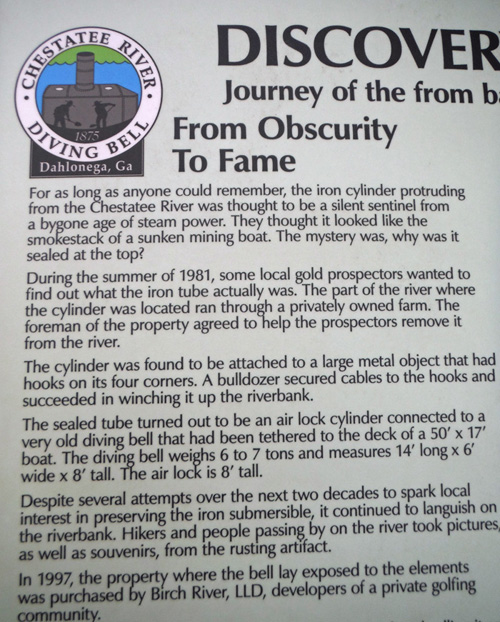



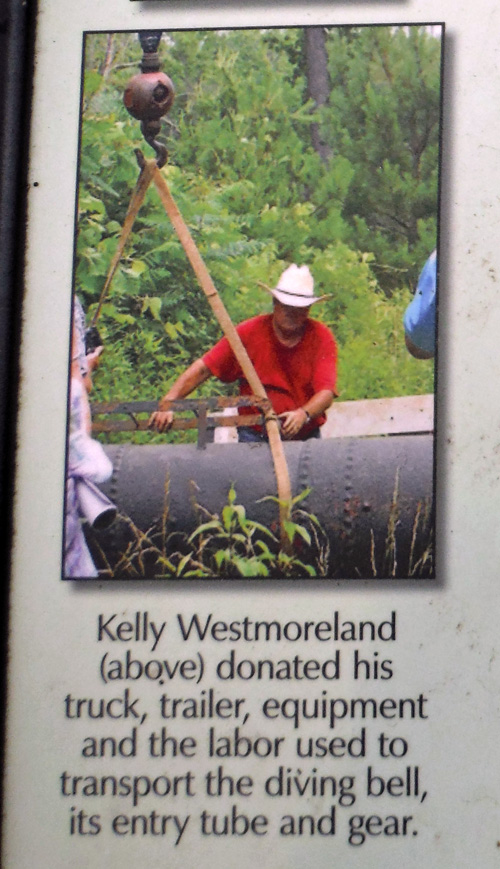
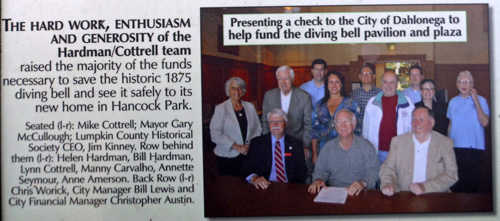




Information about preserving the diving bell (taken informational plaques in the pavilion)
More about the Diving Bell
Photos by Lori Carter





What a fascinating artifact from Dahlonega gold history!
Location 2: The Dahlonega Gold Museum
Photo by Lori Carter

We started with a film about gold mining in Dahlonega
Photos by Lori Carter


Richard Harris gave us an exclusive look at bricks in the wall plus there was one on display.
They were made from mud taken from a local creek and they contain tiny bits of gold!
Photos by Lori Carter

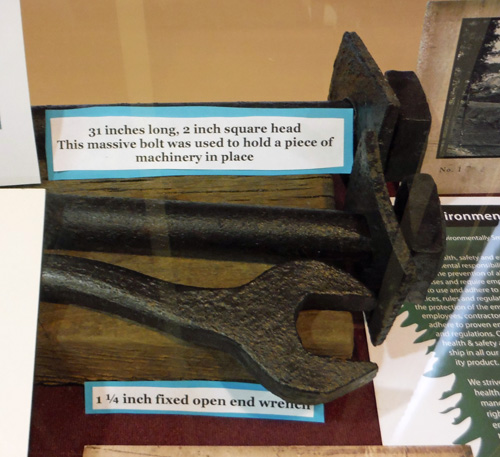
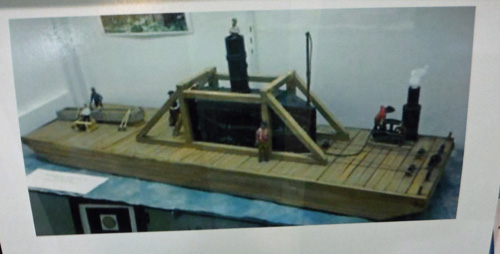
More artifacts from the Chestatee Diving Bell
plus a model of what it looked like on the barge
Photo by Lori Carter

I like these old marbles
Photo by Lori Carter

There is a nice rock and mineral collection there too
Different Gold Mining Methods
Photos by Lori Carter

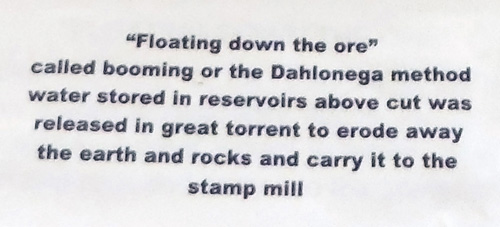

Flumes carried water via gravity to high pressure hoses


Water cannons blasted large amounts of rock, gravel, and sediment from hillsides



A water cannon and nozzle on display at the museum
Photos by Lori Carter
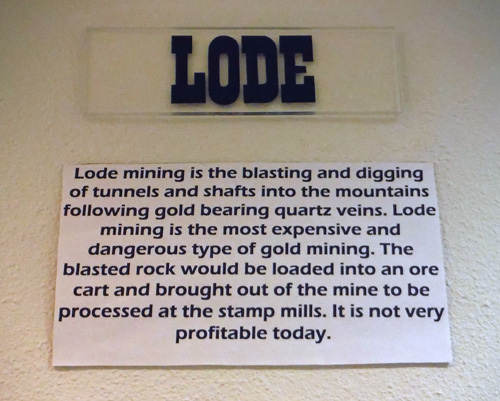

The kind of mining a lot of people associate with mining: underground, explosives, and dangerous
Photos by Lori Carter



A placer deposit (pronounced "plasser") is an accumulation of heavy sediments.
Placer mining evokes the iconic images of gold panning,
but other tools like rocker boxes were used (see the Crisson photos below)
Hydraulic mining also uncovered placer deposits
Ore Processing
Photos by Lori Carter
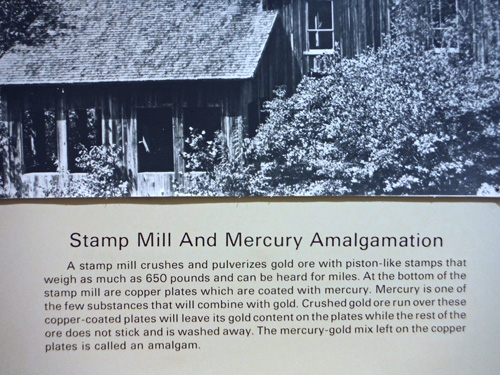

There is a small replica of a stamp mill at the museum. Richard Harris ran it so we could see how it works.

We got a closer look at a larger stamp mill

Close-up of the cams that lift the weights used to crush ore








Dahlonega Mint
Rare Gold Coins
Photos by Lori Carter

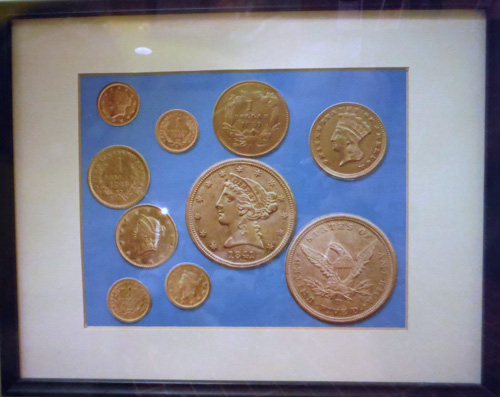
Coins minted in Dahlonega have a "D" mint mark and are very rare because they were minted for such a short time (1838-1861)


Coins minted by private minters are even more rare and valuable
Location 3: Crisson Gold Mine
Photos by Lori Carter
Old Gold Mining Equipment

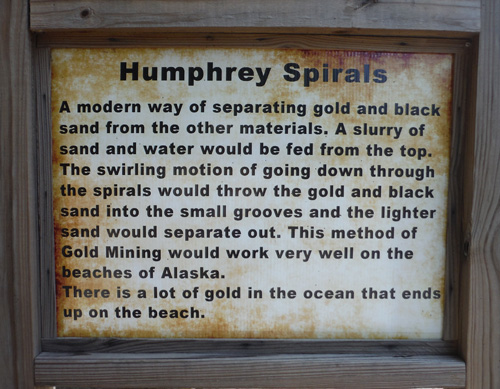





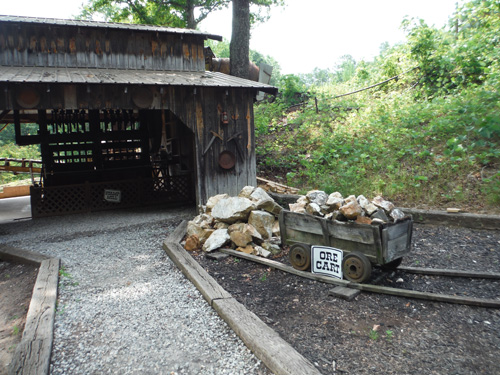
Photos by Lori Carter
They ran the stamp mill for us!


It starts with a pile of gold bearing quartz


The ore is loaded into the stamp mill

As cams turn they lift heavy weights that drop and crush the ore

Water continuously washes crushed ore through the mill...

...and washes it over metal plates
Photos by Lori Carter
Panning for gold

A pan of sand? Hm, I guess I'm done...

...but these guys want to learn how to pan

So this nice lady showed us what to do

It didn't take long and she had this -- can you see the gold?

There it is!
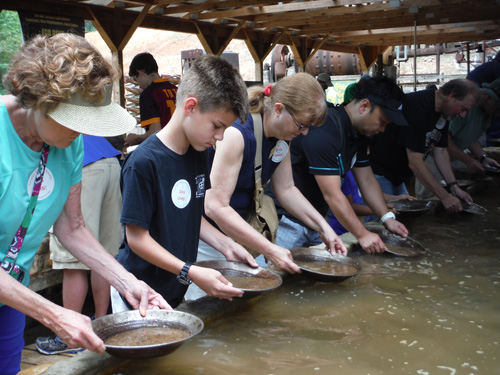
Now it's our turn!
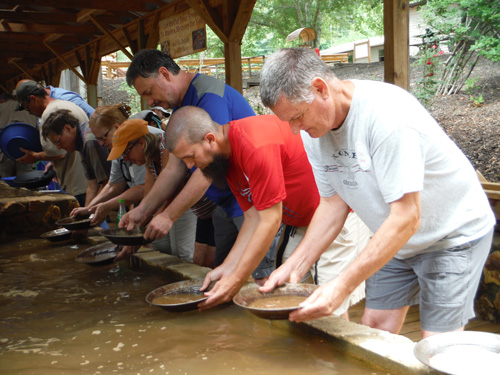
Look how hard they are working

Everyone is carefully swishing that sand around
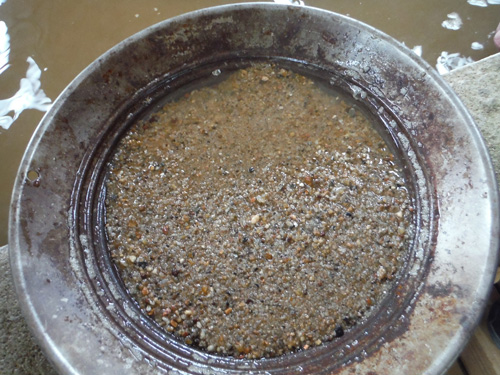
Here's how it looks after a little swishing

Charles was a little tentative...

...but Casey got into it

Daniel finished mine for me

Nice sand!

And a little bit of gold too!
Photos by Lori Carter
Gem Grubbin'

Nice sand!

But these guys want the cool rocks!


Kento did great!

Stacy and her family "grubbed" a nice bag of rocks too!
Location 4: Old Gold Mine
Photos by Lori Carter
The Water Wheel




Photos by Martha Carroll


Photos by Lori Carter
Panning in the Creek
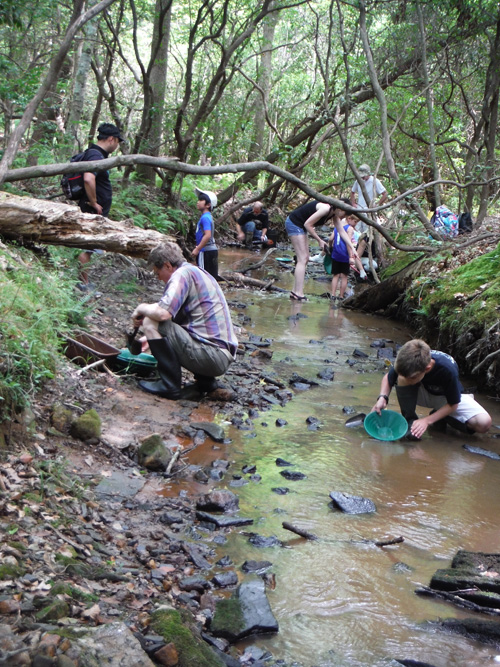




Photos by Martha Carroll

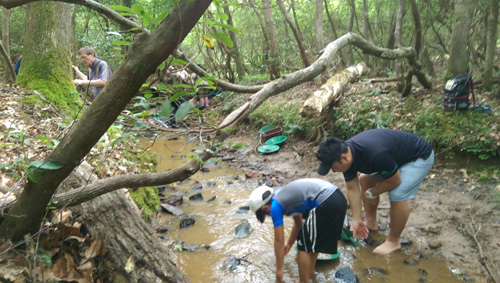

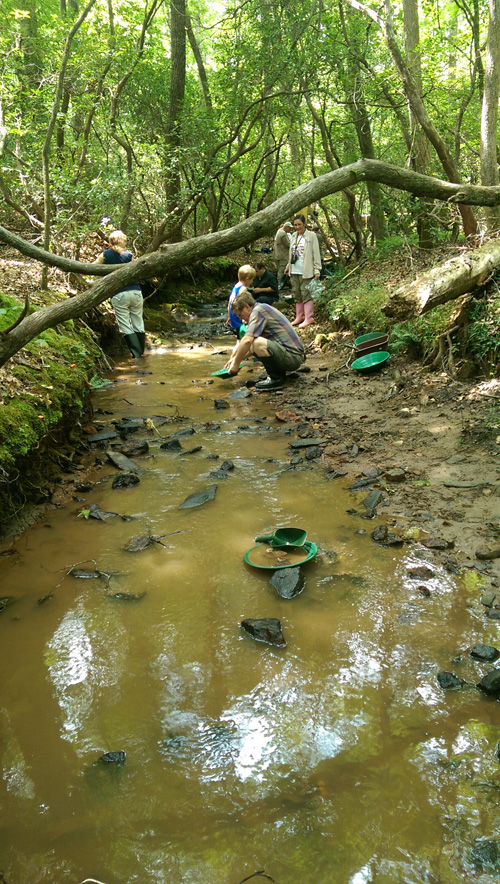



Photos by Martha Carroll
Bob Brady and the Gold Cube

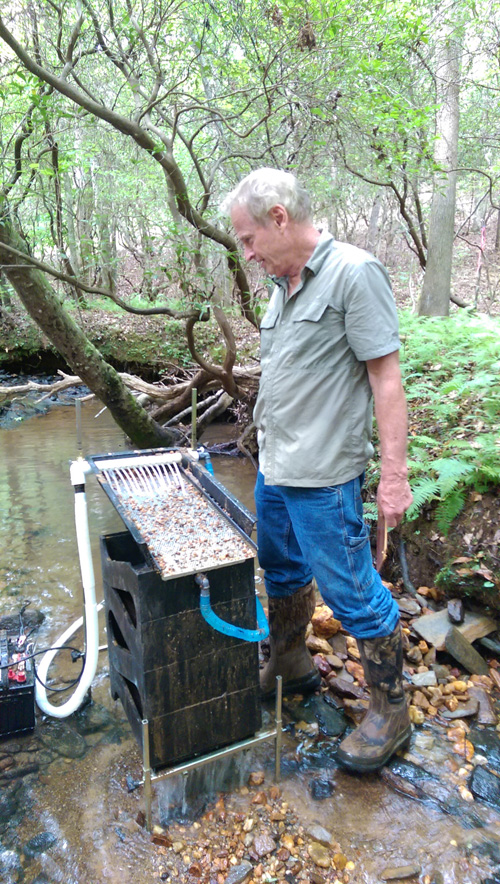
Photos by Lori Carter

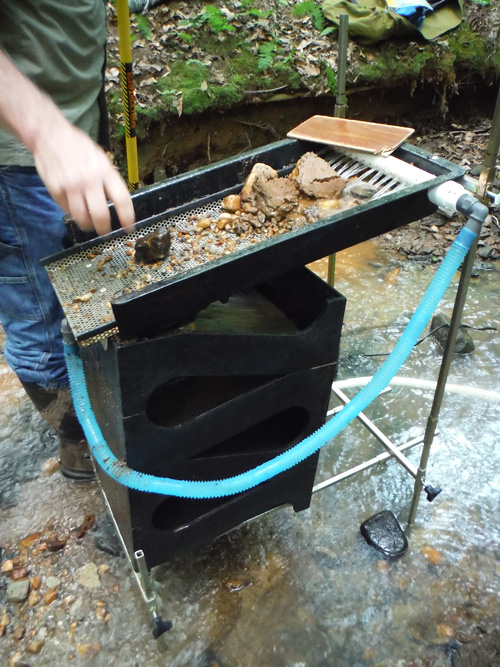
Bob shoveled sand and gravel from the creek and put it in the gold cube

A water pump powered by a marine battery pumped water over the sand
The water pushes the sand down through multiple levels of the cube

Each level of the cube has a textured surface that traps heavy particles

At the end of the day, Bob emptied each level into a bin
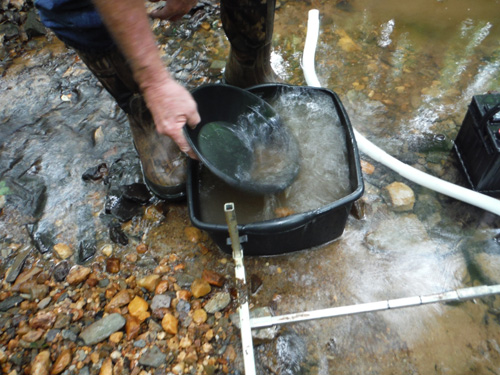
Then he panned a bit to check for gold!
Note: The concentrate from the gold cube had mostly very fine gold "flour"
so Bob donated all of it to Sand Section!
Photos by Martha Carroll
What we found

Martha Carroll's pan
Photos by Lori Carter

A father/daughter team panned all of these!

Bob Brady found this beautiful quartz arrowhead!
Note: It is legal to collect artifacts on private property but not elsewhere
Photos by Lori Carter
Some fun guys
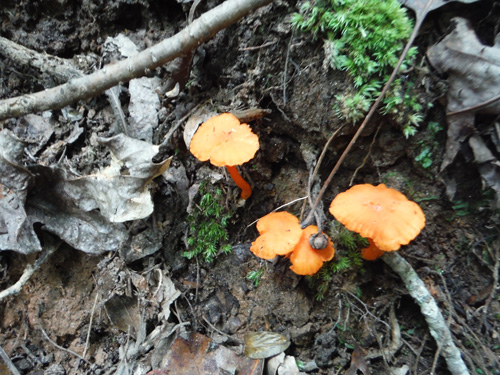
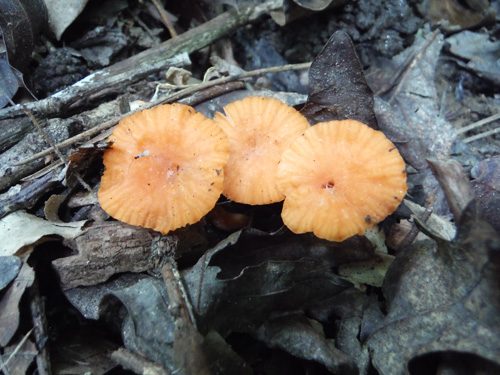



Photos by Martha Carroll



Click below for field trip policies

Copyright © Georgia Mineral Society, Inc.
